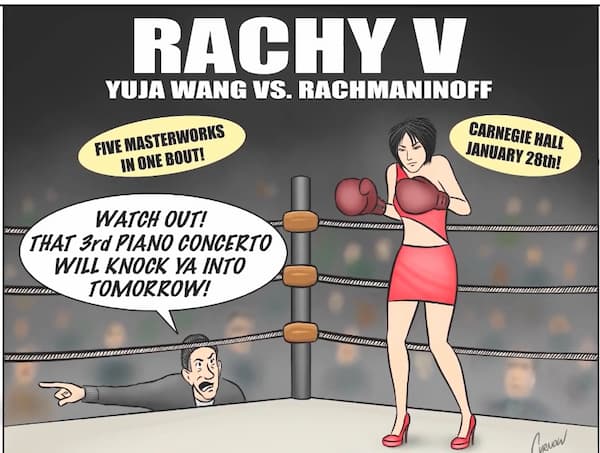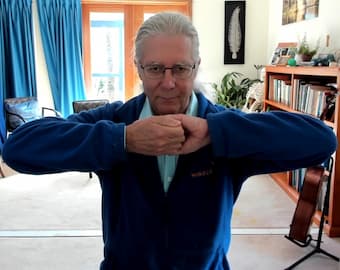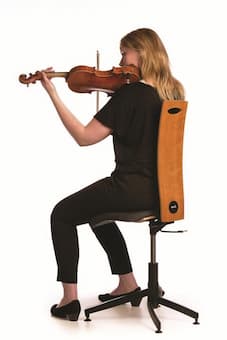
Credit: https://www.youth.gov.hk/
Playing music is so expressive and creative, yet we seek to quell our tendencies to move and flow with the music. As a result, we tend to sit like statues, unlike our jazz and bluegrass counterparts, who often stand to play and who are usually encouraged to move, although their environs can be confining and limit movement. Some of us do get carried away, though — we overdue our movements to indicate being “into” the music, to the detriment of their bodies. I call it the “jazz look.”
We humans were born to move. Being static, still or motionless is known to be detrimental to our health. With the advent of standing desks we not only know that sitting can be injurious and lead to shorter lifetimes, even if we exercise religiously, we know that static effort, or holding a position, is much more strenuous on the body because muscles tend to tighten, blood flow is constricted and oxygen is not replenished.
Soon we tire. Then we hurt. We can engage in a dynamic movement for a long time where blood is replenished with fresh oxygen. The major offenders? — lack of movement, holding our instruments and holding our arms up and away from the body at or above shoulder height.
There are unobtrusive ways to reduce this scenario of tension build-up to give our bodies what I call mini-breaks. I call them my Onstage Tricks ™ We can alleviate tension even while performing onstage, while in the studio, in the practice room and yes even at computer desks! The essential guiding factor is to do the opposite motion of the positions we are required to maintain all day. And non-musicians this applies to you too!
Please note: Always check with a physician first before you try any stretches, especially if there is any injury present. Never do any exercises that cause pain.
Sitting properly is the first step. Make sure that you are sitting in the optimum position for your height and your instrument. Find a chair that allows you to sit high enough so that your knees descend from your hips. If you are diminutive sit forward. Do not allow your feet to dangle. If you are tall, find dense cushions to raise you. Your feet should be flat on the floor and your weight should be forward and on your feet. Maintain a slight lumbar curve in your spine, as there is when you stand. Sit erect. Avoid turning or twisting your torso, leaning left or right and keep your shoulders down and facing forward. Make certain that your head is erect with your chin tucked in. Try some of the following moves whenever you have a few bars of rest.
These can be effective even if you only have time to do them once, but if you are able to do them more than once, all the better.
* Chin Tucks. Keep your head erect as if you are a puppet on a string and pull your chin gently inward. This is a very small movement.
* Tuck your chin in. While keeping your shoulders relaxed and down, slowly turn your head to the right to look over your right shoulder; return to looking forward. Repeat turning your head left.
* Tuck your chin in. While keeping your shoulders relaxed and down, slowly tilt your head, right ear toward right shoulder. Return to neutral. Repeat tilting your head to the left.
* Shrug your shoulders while taking a deep breath, bringing your shoulders toward your ears. Relax and release your shoulders while breathing out.
* Circle your shoulders. Bring your shoulders forward, then up toward your ears, then back, opening your chest and relax bringing your shoulders to neutral or normal. Now reverse the direction of the circle.
* For pectorals and shoulders: Reach behind you and grasp the back of your chair. Lean forward so you get a nice stretch. Repeat with the other arm. If you are able grasp the back of the chair with both of your arms while holding your instrument between your knees do so and gently lean forward.
* While keeping your shoulders down, squeeze your shoulder blades together.
* If it is possible to set your instrument down momentarily, clasp your hands behind your back and while keeping your elbows straight but not locked pull your shoulders gently backwards.
* When you stand to take a bow, hold your instrument in one hand and reach behind your back with your other arm. Place your hand on your back with your palm facing outward and gently move your hand upward toward your head. Switch arms.
* Let your arms uncurl often and allow them to hang by your sides.
* Make a fist and gently do circles with your hands rotating your wrist.
* Do circles with your thumbs gently releasing them.
* Take a deep breath in and blow the air out. Then contract your abdomen. Imagine pulling your belly button backwards.
* Squeeze your buttocks and release. This can be done while standing and taking a bow or while seated.
* Keep your feet on the floor and turn one knee inward as you sit, rotating the hip joint. Repeat with the other leg.
* Adjust the position of your feet often for good circulation and to prevent potential blood clots that can occur from prolonged sitting, especially on airplanes. Keep your heels on the floor and lift your toes. Keep your toes on the floor and lift your heels. Do circles with your ankles.
For those of you who are able, alternate sitting and standing to play, as well as when you are on your computer. When you stand avoid locking your knees. Keep them slightly bent with your feet apart. Avoid overarching your back or conversely, slumping forward. Take a moment to just wiggle!
Awareness is the key to injury prevention. These and many more “moves” for your studios or practice rooms are displayed in my book. Make up some of your own as well, with the goal of maintaining fluidity and ease while avoiding tightness and tension. When you are tight you sound tight. Think release! You’ll feel better and you’ll play better.
Janet Horvath is the author of Playing (Less) Hurt –An Injury Prevention Guide for Musicians available at halleonard.com





As always, I enjoy reading your essays. Thank you!